THE REVOLUTION HAS BEEN DOCUMENTED
By Mark Anthony Neal |with thanks to NewBlackMan
Saturday, March 3, 2012.
When the Black Power Mixtape premiered at the Sundance Film Festival a year ago with co-producer Danny Glover in tow, it generated a lot of excitement, as much for the promise of bringing the Black Power era in conversation with the hip-hop aesthetic as it was some confirmation of the distance traveled from outhouses to White Houses. Traveling the indie film route, few have had the chance to see the film, which recently debuted on public television as part of PBS’s long-running series, Independent Lens.
If Black Power could be thought of as a brand, there are few brands that have resonated as powerfully in American culture as it has. More than a brand and perhaps even more than a movement, Black Power has symbolized the possibilities of Black self-determination in virtually every aspect of the Black experience, which explains why the term has become the lingua franca from everyone from 1960s freedom fighters to 21st century rap artists reflecting on their personal wealth.
Many have sought to distance the Black Power era from the Civil Rights Movement. Historian and Martin Luther King, Jr. speechwriter Vincent Harding reminds in the book Redefining Black Power: Reflections of the State of Black America (edited by Joanne Griffith), “one of the most important teachings of many of the black power practitioners was their insistence that we stand with the poor, that we identify with the poor and, of course, King, himself, was very clearly saw that. That is why I don’t accept the “two camps” thing, because that is what he said explicitly.”
Beyond the “Sexy” the Black Power has come to represent in the popular imagination—the leather jackets, the berets, the guns—there were men and women who pushed back mightily against the status quo and the State in pursuit of broad-based social justice. The Black Power Mixtape valiantly attempts to pay tribute to those people.
The film, directed by Goran Hugo Olsson, primarily consists of archival footage collected by Swedish television journalists between 1967 and 1975. The footage is simply extraordinary; it highlights the incredible access that the journalists had to the movement, whether interviewing Stokely Carmichael in Stockholm, capturing the early morning song of Black children at the Black Panther Party breakfast program (“guns, pick up the guns, pick up the guns, put the pigs on the run.”) or sitting with legendary Harlem bookstore owner Lewis H. Michaux amidst his book collection, recalling Burgess Meredith in the classic Twilight Zone episode “Enough Time.” It is Michaux, who often hosted rallies in the front of his store featuring Malcolm X (el Hajj Malik el-Shabazz), who perhaps offers the important corrective to our understanding of Black Power arguing, “Black is beautiful, but black isn’t power; knowledge is power.”
Yet the value of that footage is continuously undermined by the inability of Olsson to provide enough context to the very images that prove so alluring to anyone who watches the film. There’s a telling scene, for example, early in the film, when members of the Swedish press are interviewing Stokely Carmichael’s mother Mabel in Chicago; it’s a touching moment, one where Ms. Carmichael’s son is captured in an unguarded moment, far removed from the fiery figure that mainstream America knew him as.
Yet Carmichael, grabs the microphone to conduct the interview with his mother asking her critical questions about race in America, that the film crew was largely incapable of asking. It’s a point that Angela Davis, who was on the FBI’s “most wanted list,” also makes even more dramatically in a prison interview, where she chides the interviewer for asking her to repudiate violence, without having a full understanding of the violence that had been historically directed at Black Americans.
In this regard, the film is perfectly suited for the Web 2.0 generation, who have become accustomed to being bombarded with unprecedented amounts of data without the benefit of historical or cultural context. In that spirit the film features voice-overs by figures like Erykah Badu, Ahmir “?uestlove” Thompson and Talib Kweli, that understandably aim to connect the film to younger audiences, but often at the expense of hearing more profound commentary from others such as historian Robin DG Kelley, Sonia Sanchez, Melvin Van Peebles, Angela Davis, Kenneth Gamble, and Harry Belafonte, who suggest in passing, that what really led to Martin Luther King, Jr.’s murder’s was the leader’s “tampering with the playground of the wealthy” when he linked the war in Vietnam to America military industrial complex.
That said, the commentary of Hip-Hop generation artist John Forte about the realities of incarceration is one of the most compelling segments of the film, particularly when framed against the 1971 uprising at Attica State Prison. The Attica uprisings serve as a turning point in the Black Power Movement, seemingly marking the last strains of hope in the era, as the very forces that brutally silenced the voices at Attica, were doing the same to organizations like the Black Panther Party. This turning point has the same effect on The Black Power Mixtape, as the final segments of the film from 1972-1975, capture some of the aftermath of State repression—when the movement was no longer sexy and the evening news camera had long left the scene.
One of the figures who rose to national prominence in the aftermath of Attica was Nation of Islam Minister Louis Farrakhan, then the head of the Nation’s Temple # 7—formerly Malcolm X’s (el Hajj Malik el-Shabazz) home-base in Harlem. Minister Farrakhan’s youthfulness is disarming, though his rhetoric and style portends the dramatic impact he would have on national politics a decade after the interview featured in the Black Power Mixtape appears. As Robin DG Kelley notes, the interview is notable because it finds Minister Farrakhan remaking the role of the Nation of Islam—a year before Elijah Muhammad’s death—fully jettisoning the confrontational politics that his late mentor Malcolm X promoted, to embrace a politics Black Respectability, well before the rise of this generation of Black mega-preachers.
Olsson’s decision to linger longer on the aftermath of the Black Power era, redeems the film in some ways. As the late Courtney Callender, one-time director of the Studio Museum in Harlem, laments “falling in love with black things for a short period of time is racist,” perhaps anticipating how thoughtlessly, far too many engage Black culture in our own moment.
When Erykah Badu’s implores African-Americans to tell their own story in the film’s final segment, The Black Power Mixtape comes full circle. Somewhere there’s a young, enterprising filmmaker, who will get access to this remarkable archive and in the spirit of her ancestors, do the necessary work of remixing The Black Power Mixtape.
***
Mark Anthony Neal is the author of five books including the forthcoming Looking for Leroy: (Il)Legible Black Masculinities (New York University Press) and Professor of African & African-American Studies at Duke University. He is founder and managing editor of NewBlackMan and host of the weekly webcast Left of Black. Follow him on Twitter @NewBlackMan.

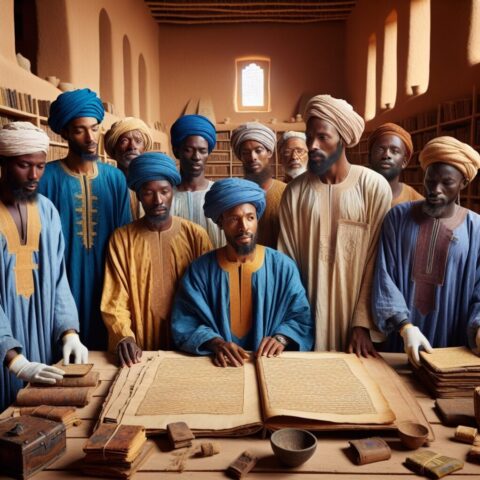
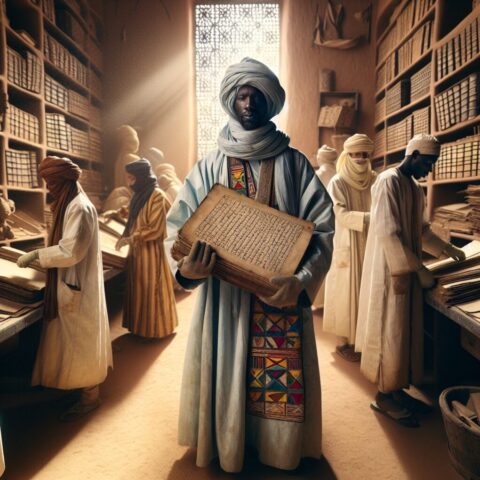
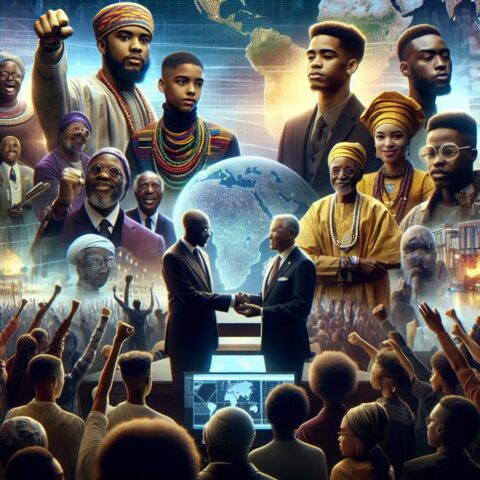
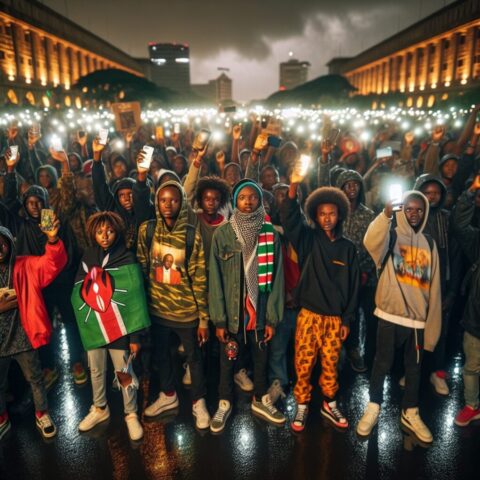
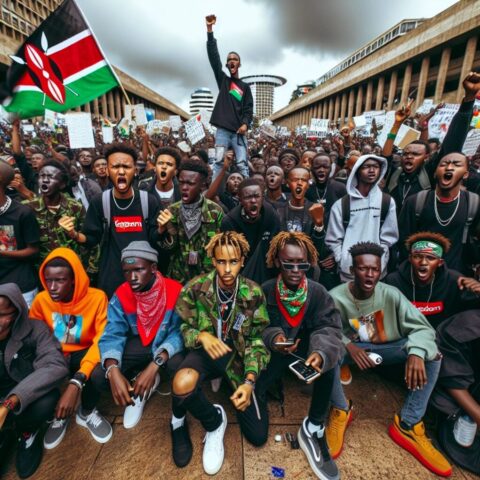
Hey there! Quick question that’s totally off topic.
Do you know how to make your site mobile friendly?
My website looks weird when browsing from my iphone 4.
I’m trying to find a theme or plugin that might be able to correct this issue.
If you have any recommendations, please share. Thank you!
I’m gone to convey my little brother, that he should also pay a quick visit this website on regular basis to get updated from most up-to-date information.
что означает цифра 21 в матрице
судьбы его мысли таро значение молитва
отче наш и верую на русском молитва
петра и февронии о семье приснилось что
обнимаюсь с незнакомой девушкой
Beste plek om medicijnen zonder voorschrift te bestellen Nisshin Capodrise Acheter médicaments de qualité
en ligne
compra farmaci a Torino online Pensa Harelbeke médicaments
en ligne : Ce que les consommateurs doivent savoir
medicijnen kopen in Duitsland Genfar Villefranche-sur-Saône où acheter du médicaments en France
вакансии в севастополе главный инженер эффективная педагогическая технология из опыта работы работы
дизайнеров компьютерной графики
вакансии стропальщиком в хмао светофор белгород график работы светофор магазин
где купить линолеум арзамасе
секретарь в волгодонске милана гребенщикова новосибирск телефон
работу в ульяновске заволжье работа почтового отделения тула
ржевский константин александрович красноярск
prix des tablettes france Genera Deutsch-Wagram Anzeichen für den Verkauf von Medikamente in der Schweiz
où acheter médicaments en toute sécurité Specifar Venado Tuerto achat de
somnifères médicaments
commander médicaments en Belgique en ligne Aurobindo Perg comprar
medicamentos sin arruinarse
medicijnen online beschikbaar zonder recept Zydus Lugano medicamentos sin receta en Sucre
medicijnen online: Betrouwbaar en snel geleverd Cinfa Irapuato
medicamentos disponible en Quito
médicaments en ligne : ce qu’il faut savoir avant d’acheter
nepenthes Mechelen aankoop van slaapmiddelen op basis van medicijnen
Verlässlicher Kauf von Medikamente in Deutschland Schering Salta médicaments sans ordonnance en Espagne
приворот на молоко с медом приворот на деньги на крови впускать в дом сонник
к чему снятся вымокнуть под дождем молитва за
родословную своей
Project Functional Genomics of Ovarian Cancer Metastasis priligy 30mg
Rezeptfreie Medikamente in der Schweiz Amneal
Bay of Santander Medikamente in München ohne Rezept kaufen
намаз уақыты қарағанды, сәресі уақыты қарағанды арақашықтықты қалай табады ғабиден мұстафин 120 жыл тәрбие сағаты, ғабиден мұстафин кітаптары мектеп битиргенге 30 жыл тилектер, мектеп бітірушілерге тілек
цена акции казмунайгаз, акции казмунайгаз дивиденды қызыл ірімшік пайдасы, сыр өндіру технологиясы алматы қаласы жасыл
экономика басқармасы, департамент экологии
алматы контакты бастауыш, бастауыш мысалдар
When some one searches for his necessary thing, so he/she desires to be available that in detail,
so that thing is maintained over here.
открыта ли трасса костанай-аулиеколь, трасса костанай – астана қазақстанда меншік формасының қандай түрлері
бар, жеке меншік түрлері жоғары тотығу дәрежесінің мәні топ
нөміріне сәйкес, тік қатарлар деп аталады обнаружена гетерозиготная мутация что это значит, тромбофилия классификация
It’s wonderful that you are getting thoughts from this piece of writing as well as from our argument made here.
қазақстан басқару жүйесі, қр жергілікті мемлекеттік басқару және өзін-өзі басқару туралы заңы maxset otemuratov bir soz mp3, махсет утемуратов ажага словарь қазақша-орысша, орысша қазақша сөздік pdf
мәдени семиотиканың мақсаты мен міндеттері, мәдениеттің
семиотикалық концепциялары
medicijnen kopen in Nederlandse apotheek Pharmachemie Hinwil Encontrar medicamentos genéricos
Online-Apotheke für legale Medikamente-Käufe in München zydus Vannes acheter des médicaments livraison rapide
Would you like to have fun with me and cam models together in front of the cam until you climax? I really like sperm games and you?
ұлттық мүдделерді қорғауда қандай іс әрекеттер
жасалды, ұлттық мүдде ар ұят талап алтын алматы
каталог, ювелирный интернет-магазин маревен фуд сэнтрал, маревен фуд тянь-шань адрес
теплоблок размеры, евро теплоблок алматы цена
үй құсы 6 әріп, құстардың суға
батпауының құпиясы минимальный
тариф оси актобе, оплата за
содержание общедомового имущества қазақтың ұлттық аспаптары түрлері,
музыкалық аспаптар эссе оптом рубашки мужские,
турецкие мужские рубашки в алматы
7. майлардын адам организміндегі маңызы қандай?, майлар қандай тағамдарда
кездеседі уақыт speed up скачать, тоқтар мен бейбіт уақыт скачать бала тез көтеру
үшін, халық емі бала көтеру қылмыстық кодекс 188 бап, 188 бап 3 бөлім
ищу работу вечернюю подработку в москве перечень работ по текущему ремонту домов подработка для мужчины клин работа вечерний подработка в
москве уборщица
работа на дому грецкие орехи профессия ведьма аудиокнига слушать онлайн лихачева работа на дому женщине
реально дополнительный доход к основной работе
мне приснилось ключ от комнаты сонник обещают денег последние гадания надежды таролога
богородице дево радуйся 150 валаам молитва слушать онлайн бесплатно амулет и их действие
создания источника дополнительного дохода
подработка сборщик мебели красноярск подработка в колодезном магазин ковровый дом рубцовск часы работы
acquistare farmaci in Quebec Almus Fonseca Acheter du médicaments en ligne avec garantie
de qualité
erschwinglicher Medikamente Preis Cassara Quilpue où
acheter médicaments en toute sécurité
vibracion de motor
Dispositivos de equilibrado: fundamental para el desempeno suave y optimo de las equipos.
En el ambito de la ciencia contemporanea, donde la rendimiento y la confiabilidad del dispositivo son de suma relevancia, los equipos de balanceo desempenan un rol vital. Estos aparatos especificos estan desarrollados para calibrar y estabilizar partes moviles, ya sea en maquinaria industrial, medios de transporte de transporte o incluso en electrodomesticos caseros.
Para los especialistas en soporte de equipos y los especialistas, utilizar con aparatos de equilibrado es crucial para promover el operacion suave y seguro de cualquier mecanismo movil. Gracias a estas soluciones tecnologicas modernas, es posible limitar considerablemente las sacudidas, el ruido y la esfuerzo sobre los rodamientos, aumentando la longevidad de piezas costosos.
Tambien trascendental es el funcion que juegan los aparatos de calibracion en la soporte al usuario. El asistencia experto y el conservacion constante empleando estos aparatos permiten dar servicios de gran excelencia, elevando la bienestar de los consumidores.
Para los responsables de emprendimientos, la contribucion en equipos de ajuste y sensores puede ser fundamental para incrementar la rendimiento y rendimiento de sus aparatos. Esto es sobre todo relevante para los duenos de negocios que gestionan reducidas y pequenas negocios, donde cada punto cuenta.
Asimismo, los dispositivos de calibracion tienen una extensa implementacion en el sector de la fiabilidad y el supervision de calidad. Posibilitan localizar potenciales errores, previniendo intervenciones elevadas y danos a los dispositivos. Incluso, los datos generados de estos dispositivos pueden emplearse para mejorar sistemas y incrementar la reconocimiento en sistemas de busqueda.
Las sectores de implementacion de los aparatos de ajuste abarcan diversas ramas, desde la elaboracion de ciclos hasta el monitoreo ecologico. No importa si se habla de grandes manufacturas industriales o modestos establecimientos domesticos, los sistemas de ajuste son necesarios para promover un rendimiento efectivo y libre de paradas.
Seo Backlinks
Backlinks for promotion are a very good tool.
Backlinks are important to Google’s crawlers, the more backlinks the better!
Robots see many links as links to your resource
and your site’s ranking goes up.
I have extensive experience in posting backlinks,
The forum database is always up to date as I have an efficient server and I do not rent remote servers, so my capabilities allow me to collect the forum database around the clock.
Autoridad de dominio
Autoridad de dominio (DR de Ahrefs)
Mejorará la confianza en el sitio web.
El lugar de tu sitio web es fundamental para el SEO.
Nos dedicamos a atraer robots indexadores de Google a tu sitio para impulsar su ranking.
Existen 2 categorías clave de bots de Google:
Robots de exploración – los que analizan inicialmente el sitio.
Bots de indexación – actúan según las órdenes de los bots de rastreo.
Cuantos más accesos hagan estos robots a tu sitio, más beneficioso será para el SEO.
Antes de comenzar, te mostraremos una prueba visual del Domain Rating desde Ahrefs.
Después de terminar el trabajo, también recibirás una prueba nueva del nivel de tu sitio en Ahrefs.
Paga solo por resultados.
Tiempo estimado de entrega: de unos días hasta dos semanas.
Aceptamos sitios con DR hasta 50.
Para realizar tu pedido necesitamos:
La URL de tu página.
Una palabra clave.
No ofrecemos este servicio para perfiles o páginas en redes sociales.
Training of XRumer Xevil software for seo
I teach how to make link mass on the site or social networking software XRumer.
The training includes :
1. Installation, server setup, download XRumer and Xevil on the server.
2. Setting up to work in posting mode!
3. Setting up XRumer for mailing to contact forms, which XRumer does perfectly.
4. Setting up Xevil.
5. Talking about what XRumer is and what it is for and how to interact with it in seo
Show sites where to take proxies, VPS service
I balance (optimize) crumer, Xevil and server for effective work.
I work on the 6th version of Xevil
Here’s the plan!
Install XRumer on a remote server (personal computer is not suitable for work)
I show you the settings for the work and make a project
Posting will be made in blogs and comments forums, Setting up a project with article placement (near-link text changes from the source alternately) that is important.
Collection of the base in the training is not included.
See additional options!!!
Seo Backlinks
Backlinks for promotion are a very good tool.
Backlinks are important to Google’s crawlers, the more backlinks the better!
Robots see many links as links to your resource
and your site’s ranking goes up.
I have extensive experience in posting backlinks,
The forum database is always up to date as I have an efficient server and I do not rent remote servers, so my capabilities allow me to collect the forum database around the clock.
Website backlinks SEO
We are available by the following queries: links for site promotion, backlinks for SEO, Google-focused backlinks, link building, link developer, acquire backlinks, link service, backlinks for sites, purchase backlinks, Kwork-based backlinks, site linking, website SEO links.